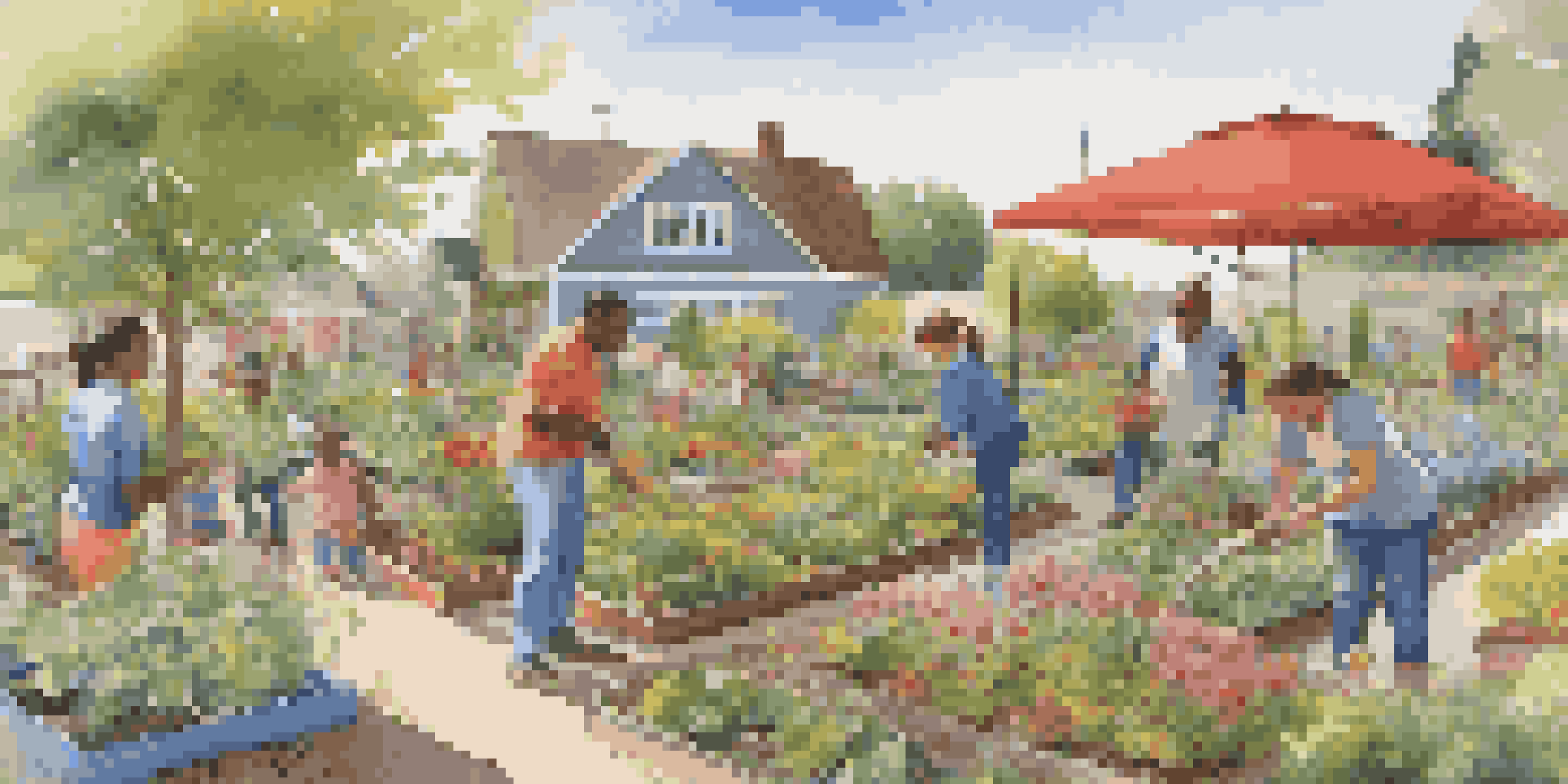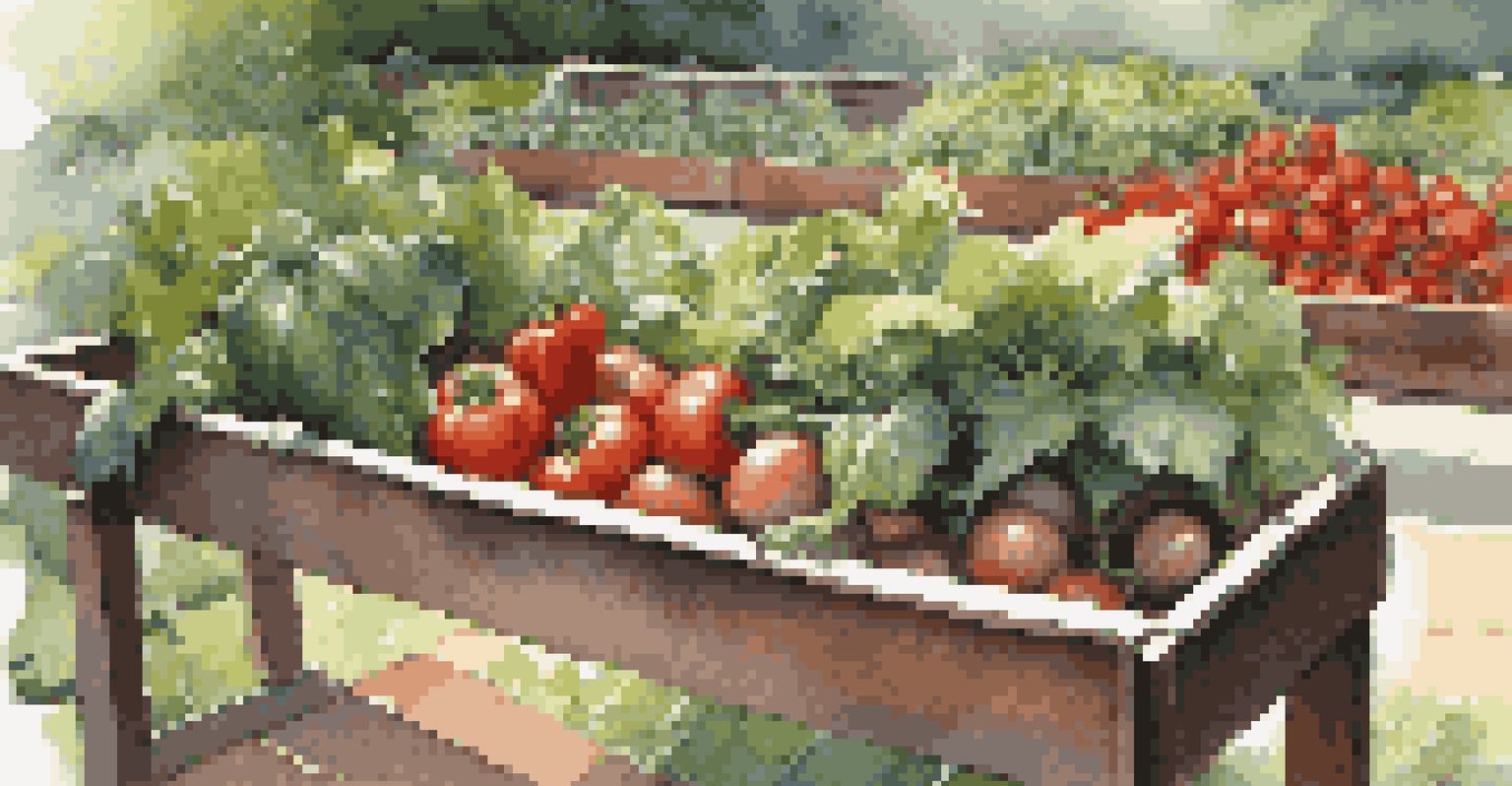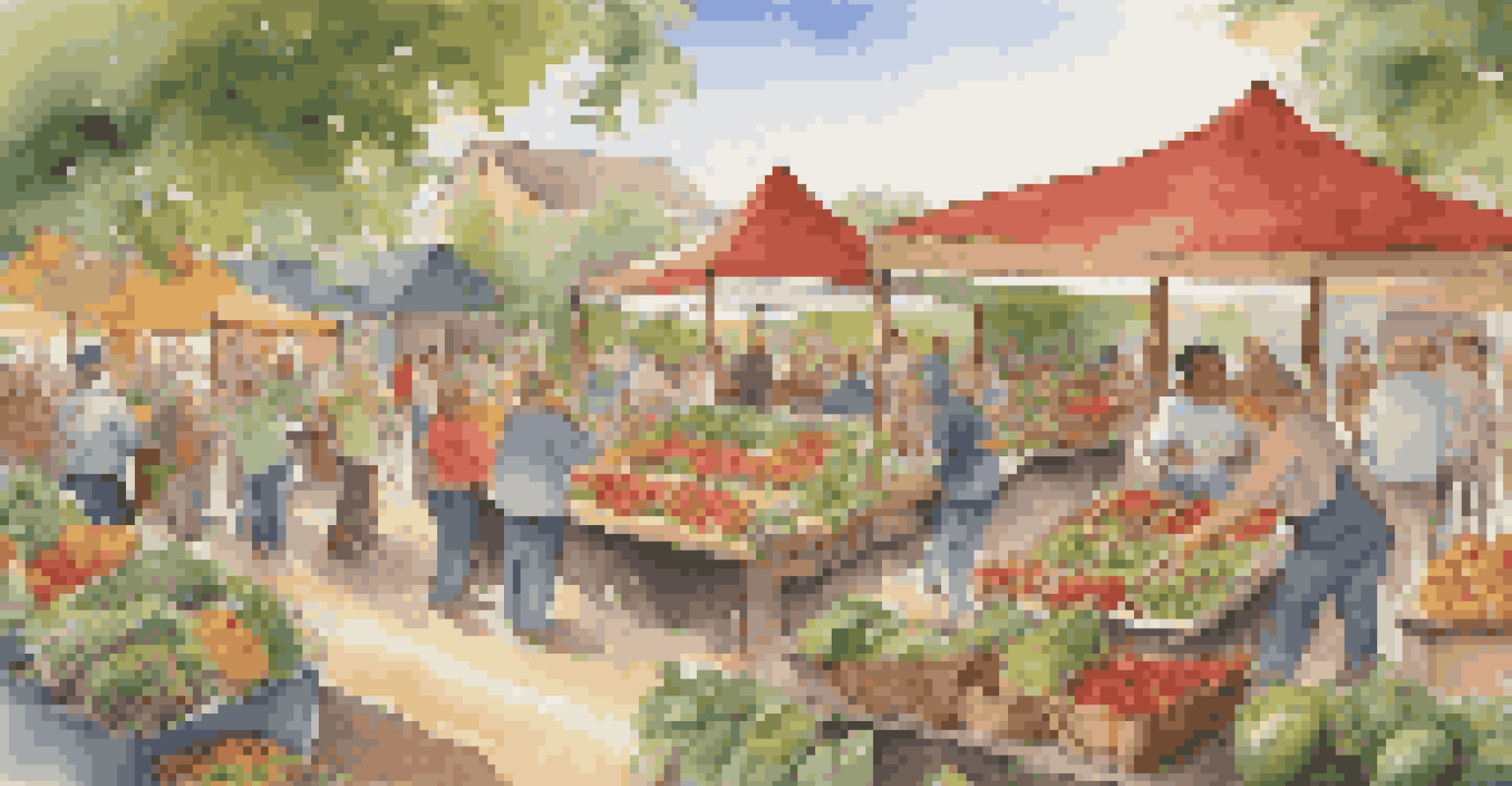Creating a Sustainable Garden for All Ages to Enjoy

Understanding Sustainable Gardening Basics
Sustainable gardening is all about creating a healthy ecosystem that benefits both people and the environment. It involves using practices that minimize waste, conserve resources, and promote biodiversity. By understanding these principles, you can create a space that not only looks beautiful but also thrives sustainably.
To plant a garden is to believe in tomorrow.
Imagine your garden as a mini-universe where every plant, insect, and creature plays a role. For example, planting native species can attract beneficial insects and pollinators, making your garden more productive. This interconnectedness is essential for maintaining a vibrant garden that supports various ages and abilities.
By embracing sustainable gardening, you'll foster an environment where everyone—from children to grandparents—can learn, play, and grow together. So let's dig in and explore how to create a garden that nurtures both nature and community.
Choosing the Right Plants for All Ages
Selecting the right plants is crucial for making your garden accessible and enjoyable for all ages. Opt for a mix of vibrant flowers, fragrant herbs, and sturdy vegetables that can withstand little hands and curious feet. Consider including plants that are easy to grow and require minimal maintenance, which will keep everyone engaged without overwhelming them.

Incorporating sensory plants, like lavender for smell or sunflowers for sight, can make gardening an engaging experience for young children. Meanwhile, adults and seniors might appreciate the beauty and utility of a well-planned vegetable patch. This diversity ensures that every visitor can find something that piques their interest and encourages interaction.
Create Inclusive Garden Spaces
Designing gardens with accessibility in mind ensures all ages can participate and enjoy gardening.
Moreover, grouping plants by height can create visual interest while also making them easier to reach for everyone. Taller plants can provide shade for lower ones, creating a layered effect that’s not just attractive but functional. With thoughtful planning, your garden can cater to all ages, making it a welcoming space for everyone.
Designing Accessible Garden Spaces
Accessibility is key to a sustainable garden that invites participation from all ages. Raised beds, for example, can make gardening easier for those with limited mobility, allowing them to engage without bending over. Pathways should be wide and stable, ensuring that everyone, including those with wheelchairs or walkers, can navigate the garden safely.
Gardening adds years to your life and life to your years.
Additionally, consider using materials that are easy to maintain and provide good drainage. Gravel or mulch paths can be a great option, as they are not only visually appealing but also functional. By designing spaces that are easy to access, you create an inviting atmosphere where people can connect with nature.
Don’t forget about seating! Adding benches or picnic tables can encourage families to spend time together in the garden. This not only enhances the garden's usability but also creates opportunities for social interaction, making gardening a shared experience that can be enjoyed by all ages.
Incorporating Educational Elements
A sustainable garden can be an incredible educational tool for people of all ages. By incorporating signs that identify plants and explain their benefits, you can turn your garden into an outdoor classroom. Kids can learn about plant biology, while adults can discover sustainable practices that they can implement at home.
Interactive elements, such as planting stations or compost bins, can also enhance the learning experience. For example, let children plant seeds and watch them grow, teaching them patience and responsibility. Adults can engage in workshops on composting, allowing them to share knowledge and skills.
Educate Through Gardening
Incorporating educational elements in gardens turns them into outdoor classrooms that foster curiosity and sustainability.
Creating a space that encourages curiosity and exploration fosters a love for gardening and sustainability. As visitors learn about the environment, they can also develop a deeper appreciation for the beauty of nature, making education a natural part of the gardening experience.
Utilizing Sustainable Practices
Sustainable gardening practices are essential for creating a garden that is eco-friendly and productive. Composting kitchen scraps and yard waste can enrich your soil, reducing the need for chemical fertilizers. This not only benefits your plants but also minimizes waste, making your gardening efforts more responsible.
Rainwater harvesting is another sustainable practice to consider. Setting up a rain barrel can provide your garden with a free and eco-friendly water source, helping you conserve water. This simple addition not only supports your plants but also teaches visitors about the importance of resource management.
By integrating these sustainable practices into your garden, you foster a culture of environmental responsibility. This not only enhances the garden's health but also inspires visitors to adopt similar practices in their own lives, creating a ripple effect that extends beyond your garden.
Engaging the Community Through Gardening
Gardening can be a fantastic way to bring people together, fostering a sense of community and shared purpose. Organizing group gardening days or workshops can encourage collaboration and allow people of all ages to contribute their skills. This communal effort not only beautifies the garden but also strengthens relationships within the community.
Consider partnering with local schools or organizations to involve youth in gardening projects. This can create opportunities for learning and personal growth, while also instilling a sense of stewardship for the environment. By engaging the community, you create a vibrant space that reflects collective values and interests.
Celebrate Community Harvests
Harvest festivals allow communities to come together, reinforcing connections and appreciation for homegrown food.
A flourishing garden becomes a hub for gatherings, celebrations, and shared experiences. When people come together to plant, nurture, and harvest, they create lasting memories and connections that enrich the community's fabric.
Celebrating the Harvest Together
The joy of gardening culminates in the harvest, and it's essential to celebrate this moment together. Organizing harvest festivals can be a fun way to bring the community together to enjoy the fruits of their labor. Everyone can participate, from picking ripe tomatoes to sharing recipes for the season’s bounty.
Such celebrations not only highlight the hard work that went into creating the garden but also reinforce the importance of healthy eating. Offering tastings of fresh produce encourages visitors to appreciate the flavors of homegrown food, fostering a connection between gardening and nutrition.

Moreover, these gatherings provide an opportunity for storytelling and sharing experiences. As people come together to celebrate, they create a shared history that strengthens community bonds and inspires future gardening efforts. After all, a garden is more than just plants; it's a space where memories are grown.